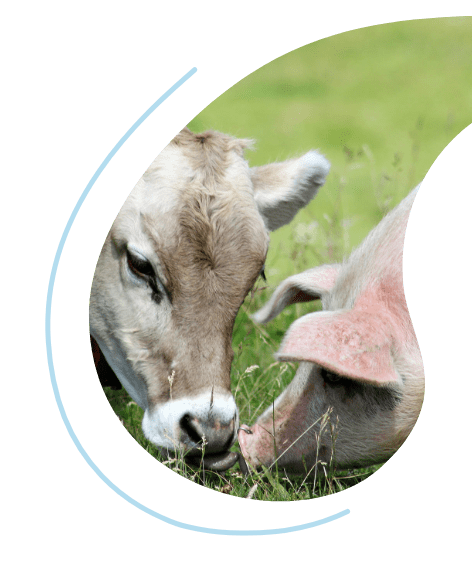
Trust Food: Food and Feed Authenticity.
Authenticity in relation to food and feed is a rather broad subject containing a variety of issues, such as consumer information, the quality control of production processes, food safety, regulatory affairs and (last but not least) fraud. Just a few examples of these include:
- The identity of meat products
- Possible cross-contamination during the food production of undesirable Ingredients
- The reintroduction of so-called Processed Animal Proteins (PAP) into feed production
- The identification of fraud-related cases, like patent infringements
More detailed examples of these include source discrimination of meat species – like bovine, porcine and poultry – for reasons of religious consumer demands or trade agreements. Additionally, the impact of the so-called horse meat scandal is still fresh in people’s minds. The BSE crisis in Europe at the end of the twentieth century led to drastic EC regulations regarding the re-introduction of non-ruminant processed animal proteins and the prevention of cannibalism in feed production.
The presence of allergens in food products can result in serious food safety problems. The combination of the diversity of food allergens and the complexity of different types of food products leads to an increased risk of cross-contamination.
Unfortunately, the increasingly globalized trade and transport of food and feed and their ingredients appears to lead to an increased degree of fraud. From a commercial point of view, the protection of knowledge via patents is a well-known phenomenon. Infringements of these patents could diminish the overall margins on your investments.
When it comes to these issues, TRISKELION is your ideal partner for high-quality testing and interpretation of analytical data. Within our dedicated laboratories, testing is performed by well-trained personnel who apply DNA and protein technology using up-to-date equipment.
Through qPCR, the presence of animal-specific DNA can be demonstrated in several types of matrices, starting from the meat and going all the way to the final food and feed products. In this way, the eventual presence of DNA from ruminants (bovine, ovine or goat), poultry (chicken and turkey), porcine, horse or fish can be demonstrated in a semi-quantitative manner. Besides qPCR, TRISKELION also uses LC-MS methods to determine any species present in food and foodstuffs. This method is focused on the identification of proteins and is especially suitable to the analysis of the overall product composition in respect to animal or plant origin.
The qPCR method for ruminant DNA in processed animal meal – developed in-house – has been validated in a European ring trial by the European Reference Laboratory (EURL) and published on the EC website as the prescribed method of testing. This analysis is accredited under ISO/IEC 17025 (L546) and recognized by FAVV.
For all known food allergens, TRISKELION uses the most reliable and sensitive methods to demonstrate their presence at limited concentrations in any type of food product.
At your special request, TRISKELION can develop specific DNA and protein-based analytical methods to assist in studies into patent infringements.
For all routine analyses, TRISKELION offers short turnaround times for testing. TRISKELION communicates the test results in a report format, including a short but sound explanation of the test methods used.











